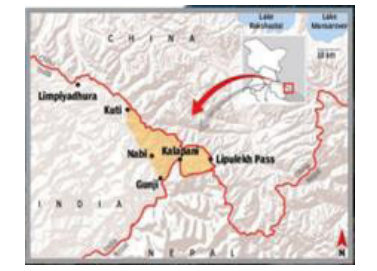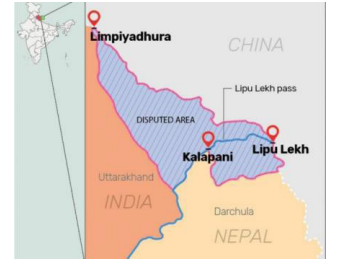
The Kalapani dispute has emerged as a focal point, introducing a new dimension to the longstanding India-Nepal international border issue. This disagreement centers around the strategic Kalapani region, situated at the tri-junction of India, Nepal, and China. The controversy has escalated due to conflicting perceptions of the river delineating the boundary between the two South Asian neighbors. The historical complexities, geopolitical considerations, and territorial claims have transformed Kalapani into a contested zone, creating tensions and fostering a fresh front in the complex web of diplomatic relations between India and Nepal. This dispute not only underscores the intricacies of border demarcation but also highlights the broader implications for regional stability and cooperation. As both nations navigate through this intricate terrain, the Kalapani issue has become a symbol of the nuanced challenges inherent in managing territorial boundaries in a region marked by historical legacies and contemporary geopolitical dynamics.
Contents
Answer
The Kalapani dispute is a border dispute between India and Nepal over a 373 square kilometer area in the Pithoragarh (Uttarakhand). The dispute stems from different interpretations of the origin of the Kali River, forming a border between the two countries. It is distinct from older border disputes that have existed like Susta, Kakarbhitta, and Limpiyadhura thus has opened a new front.
The Kalapani dispute has opened a new front on the India-Nepal international border for the following reasons:
- The Kalapani dispute has opened a new front as it is different from the older fronts that have existed e.g.
- Susta

- where A dispute in the Terai region, both countries have claimed areas.
- Kakarbhitta


- A border town where disputes have arisen over the no-man’s-land called “Gunji.”
- Limpiyadhura
- A region that was part of the larger Kalapani dispute, involving differing interpretations of the river boundary
- The Kalapani area holds strategic importance
- Due to its proximity to the China-India-Nepal trijunction
- Provides access to the Lipulekh Pass- a crucial route for Kailash Mansarovar in Tibet.
- In context of India’s security and connectivity to the Tibet Autonomous Region.
- The Kalapani dispute centres on differing claims regarding the origin of the Kali River (Mahakali River in Nepal).
- Nepal asserts the river originates closer to the Limpiyadhura pass; India argues for a more southerly origin.
- These conflicting views result in disputes over the eastern boundary, with Nepal claiming more territory to the east than India is willing to acknowledge.
- It has raised concerns about India’s intentions and its commitment to respecting Nepal’s sovereignty.
- It has strained relations between the two countries, which have traditionally been close.
- The dispute has also become a domestic political issue in both countries, making it more difficult to resolve.
Bilateral negotiations, conducting joint surveys and Hydro-Geological Studies, creating a joint commission, and enhancing People-to-People engagement are some possible solutions to the Kalapani Dilemma for India-Nepal.
In case you still have your doubts, contact us on 9811333901.
For UPSC Prelims Resources, Click here
For Daily Updates and Study Material:
Join our Telegram Channel – Edukemy for IAS
- 1. Learn through Videos – here
- 2. Be Exam Ready by Practicing Daily MCQs – here
- 3. Daily Newsletter – Get all your Current Affairs Covered – here
- 4. Mains Answer Writing Practice – here

